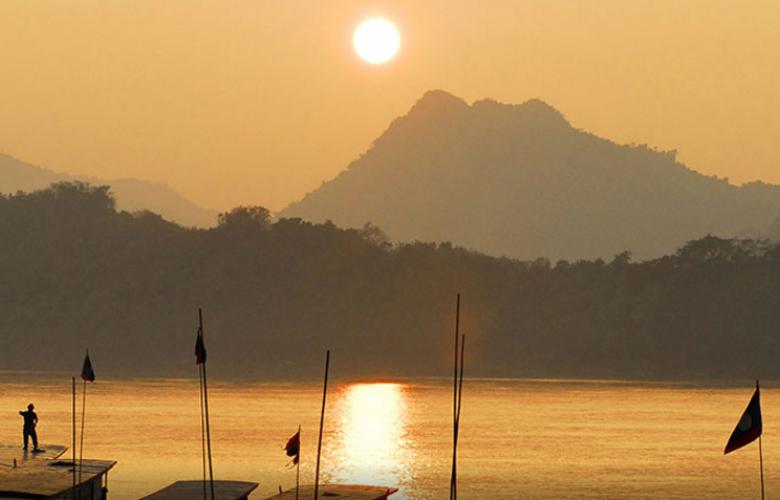In one of his first moves in Office, Donald Trump has withdrawn U.S. support for the Trans-Pacific Partnership (TPP) agreement. While, there has been talk that Japan’s Prime Minister Shinzo Abe hopes to convince President-elect Trump to stay in the TPP, this still remains to be seen.
At the APEC CEO summit in Lima Peru in November, Chinese President Xi Jinping proposed an alternative vision for the region by promoting the Beijing-backed Regional Comprehensive Economic Partnership (RCEP), which currently excludes the Americas.
He also pledged further economic openings for the region, stressing China will push for the common development of all Asia Pacific countries to create more opportunities for people in the region.
“We could see a renewed push from China and Japan to support economies in the region” says Stephen Wyatt, JLL’s Country Head in Vietnam.
“This is likely to have a significant impact on large scale infrastructure projects for the region and could also help pave the way for private capital investment.”
The plan for Mekong
China, along with Japan, has already pledged to spend billions of dollars on infrastructure projects in the Mekong region. The Mekong flows from China, through Myanmar, Thailand, Laos, Cambodia, and ultimately Vietnam.
Despite some initial progress in government-funded infrastructure projects, the region continues to suffer from a lack of private capital investment. Efforts to bolster development have been fragmented, in part because of contentious dam construction.
But this is changing. In March this year, China’s Premier Li Keqiang met leaders from the other five Mekong countries—Thailand, Cambodia, Laos, Myanmar and Vietnam—during the inaugural Lancang-Mekong Cooperation Leaders’ meeting. Li announced that China would offer preferential loans of 10 billion yuan (U$1.5 billion) and credit lines of up to US$10 billion to fund infrastructure and improve connectivity in the region.
China’s latest initiative followed its creation of the Asian Infrastructure Investment Bank (AIIB) in 2014. The bank, backed by 56 other countries with an initial capital of US$100 billion is aimed at supporting infrastructure development across the Asia region. All five Mekong countries are members of the AIIB. China has also established the Silk Road Fund, which is set to inject another US$40 billion specifically for infrastructure projects within the proposed “One Belt One Road” route, which includes developments near the Mekong River.
In September, the eighth Mekong-Japan Summit Meeting took place in Laos and was attended by Prime Minister Shinzo Abe. With the launch of the "New Tokyo Strategy 2015 for Mekong-Japan Cooperation,” Japan says it has already pledged over one-third of the 750 billion yen (U$6.8 billion) in planned assistance over three years from April 2016 to the five Mekong countries specifically for infrastructure projects.
“These initiatives bode well for the Mekong region and could prompt a rapid roll-out of regional infrastructure investment, which has seen slow progress in the past,” says Wyatt.
Controversial Dams
Reportedly 11 dams have been proposed along the lower Mekong with the aim of boosting the region’s economy through hydropower. However, an April 2016 report by the Mekong River Commission predicted the dams would cause “adverse effects” to the environment and economy of the region, also known as Asia’s rice bowl.
Meanwhile the World Bank and the Asian Development Bank (ADB) have their own funding plans to improve infrastructure and alleviate poverty in the region, with the ADB reporting close to US$11 billion spent on priority infrastructure projects since 1992.
From 2005 to 2015, 163 of the ADB’s 270 projects in Lower Mekong countries were for sectors related to infrastructure—Energy, Information and Communication Technology, Transport, Water and Other Urban Infrastructure.
Elsewhere, the Master Plan for ASEAN Connectivity (MPAC), adopted in 2010 is a broader ASEAN-wide plan to improve connectivity, with a strong focus on infrastructure development for the region.
“Real estate in Lower Mekong will benefit from increased connectivity from these infrastructure developments and trade flows as the formation of the ASEAN Economic Community gains traction,” says Wyatt. Among the numerous government-led initiatives, China’s One Belt One Road projects will have a significant impact on real estate in the region, says Wyatt.
The One Belt One Road vision stresses the importance of southwest China as a gateway to both the land and oceanic Silk Road routes, including through Myanmar, Laos and Vietnam, as part of China’s opening-up to South and Southeast Asia, according to the Chinese government.
“Going forward, there are several government-led initiatives to improve development and infrastructure for the region. We are positive about the prospects of the region and we are of the view that it is only a matter of time before private investment will pick up,” concludes Wyatt. “The Mekong region is a new frontier of Asian economic growth and has the potential to be the one the world’s fastest-growing areas.”









